 |
Bamboo trees at Juknokwon in Damyang, South Jeolla Province (Lee Si-jin/The Korea Herald) |
DAMYANG, South Jeolla Province -- Recognizing the importance of the natural world to health, many in Korea visit forests and mountain trails to enjoy "forest bathing" as an eco-antidote to tech-boom burnout.
Such ecological sites offer a tranquil atmosphere for visitors to fully immerse themselves in nature, taking in the sounds of the forest, fresh air and sunlight shining through the leaves and trees -- and to clear their minds.
Damyang’s Juknokwon -- “bamboo forest” in Korean -- is considered perhaps the best park for its spectacular forest bathing year-round.
The forest is cool in the spring, offering fresh air. Visitors can soak up the warm sunlight pouring through green leaves during the day amid a canvas of bamboo stalks.
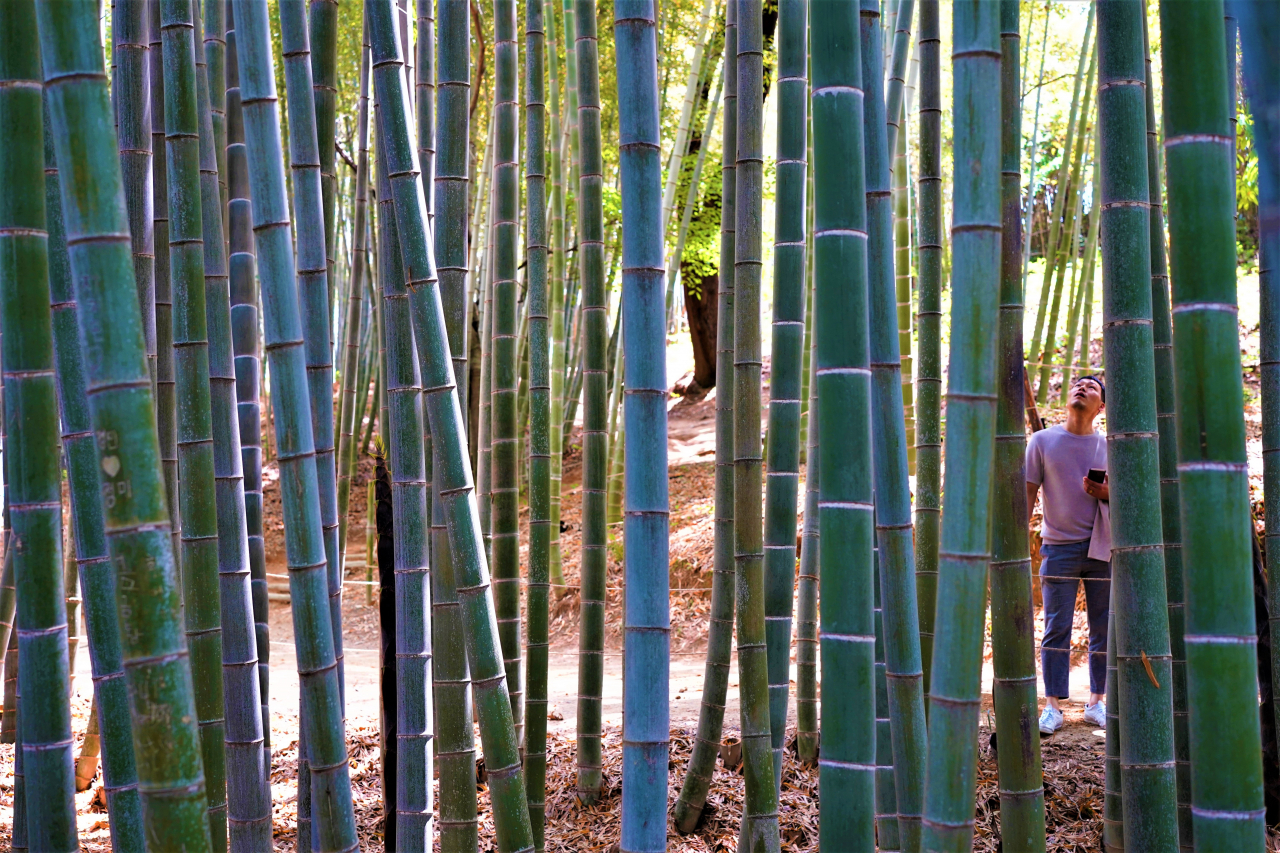 |
A visitor looks up at the bamboo trees at Juknokwon in Damyang, South Jeolla Province, May 8. (Lee Si-jin/The Korea Herald) |
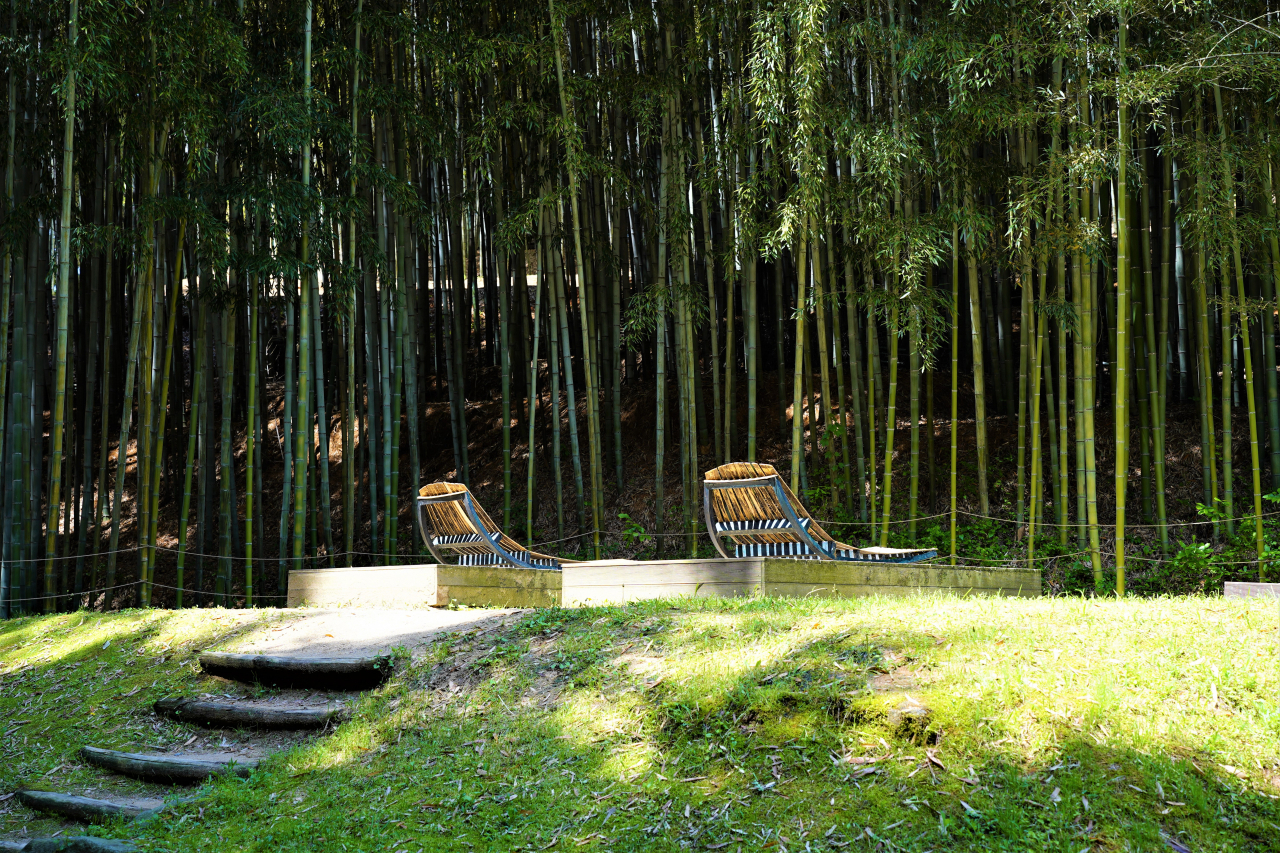 |
Juknokwon (Lee Si-jin/The Korea Herald) |
In the heat and humidity of summer, Juknokwon's shade offers a cool escape.
In the winter, the bamboo grove presents a stunning snowy landscape with 310,000 square meters of forest covered in a white blanket.
Known to produce more phytoncide -- a natural substance that trees produce to keep pests and microbes away -- than pine trees, Mongolian oak or yellow poplar, the lush forest of Juknokwon’s bamboo trees offers a pleasant walk throughout the year.
After passing through the entrance gate, visitors can enjoy the forest park by strolling around eight different trails, each with a different theme, including the scholar’s road, meditation road and more, leading to different tourist attractions like hanok cafes, a “2 Days & 1 Night” filming location, playgrounds, traditional pavilions and an observatory.
Most of the trails are covered with dirt, but the dirt paths are soft enough for a family to push a stroller or wheelchair along without difficulty. The walking paths with gentle slopes are comfortable for children and the elderly as well.
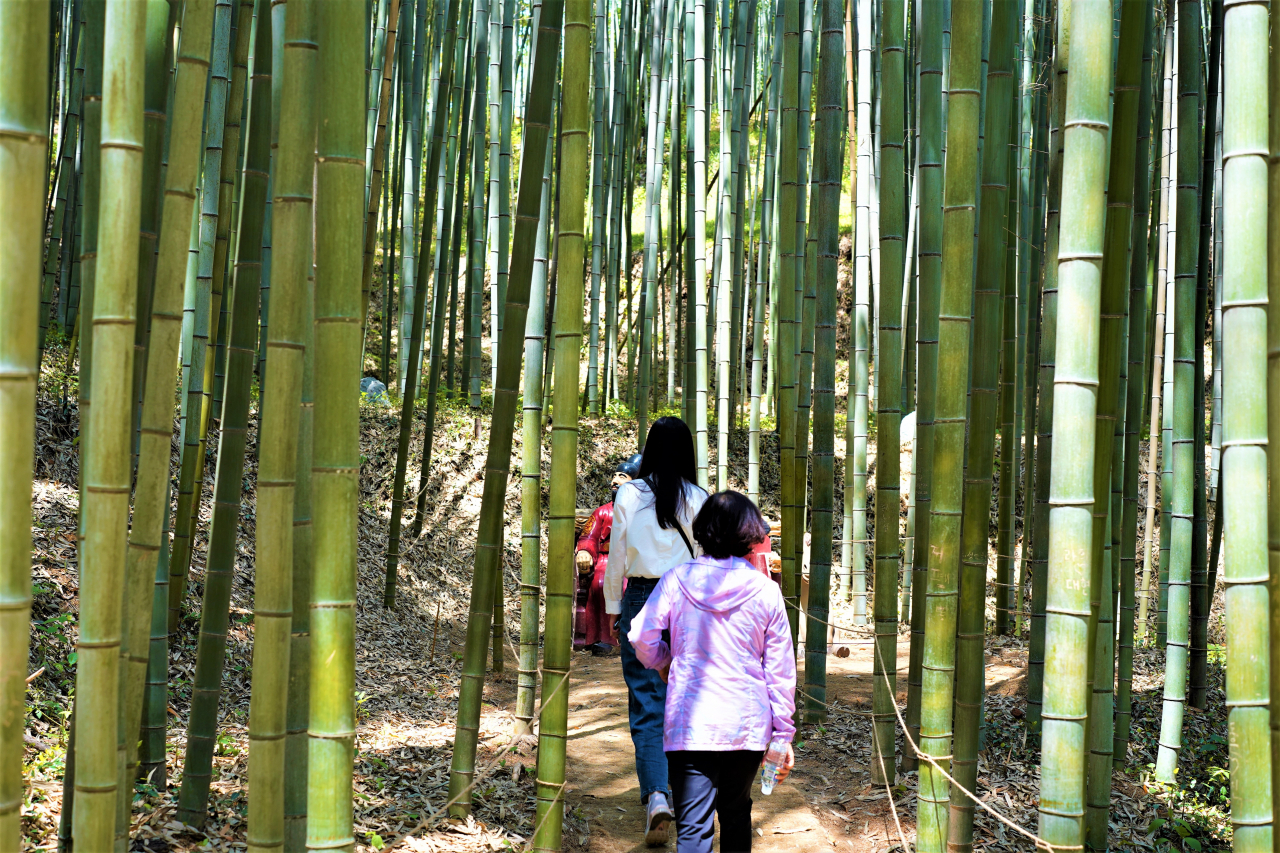 |
Visitors walk on a trail at Juknokwon in Damyang, South Jeolla Province. (Lee Si-jin/The Korea Herald) |
Visitors can catch up with friends and family at benches nearby, when the light stroll becomes a little tough.
Sitting cross-legged on floors seem to be disappearing, but visitors can experience the Korean way of sitting on the floor at the hanok-style pavilions at Chuwoldang -- a cafe near Juknokwon’s back door -- and enjoy the sounds of the leaves blowing in the gentle breeze.
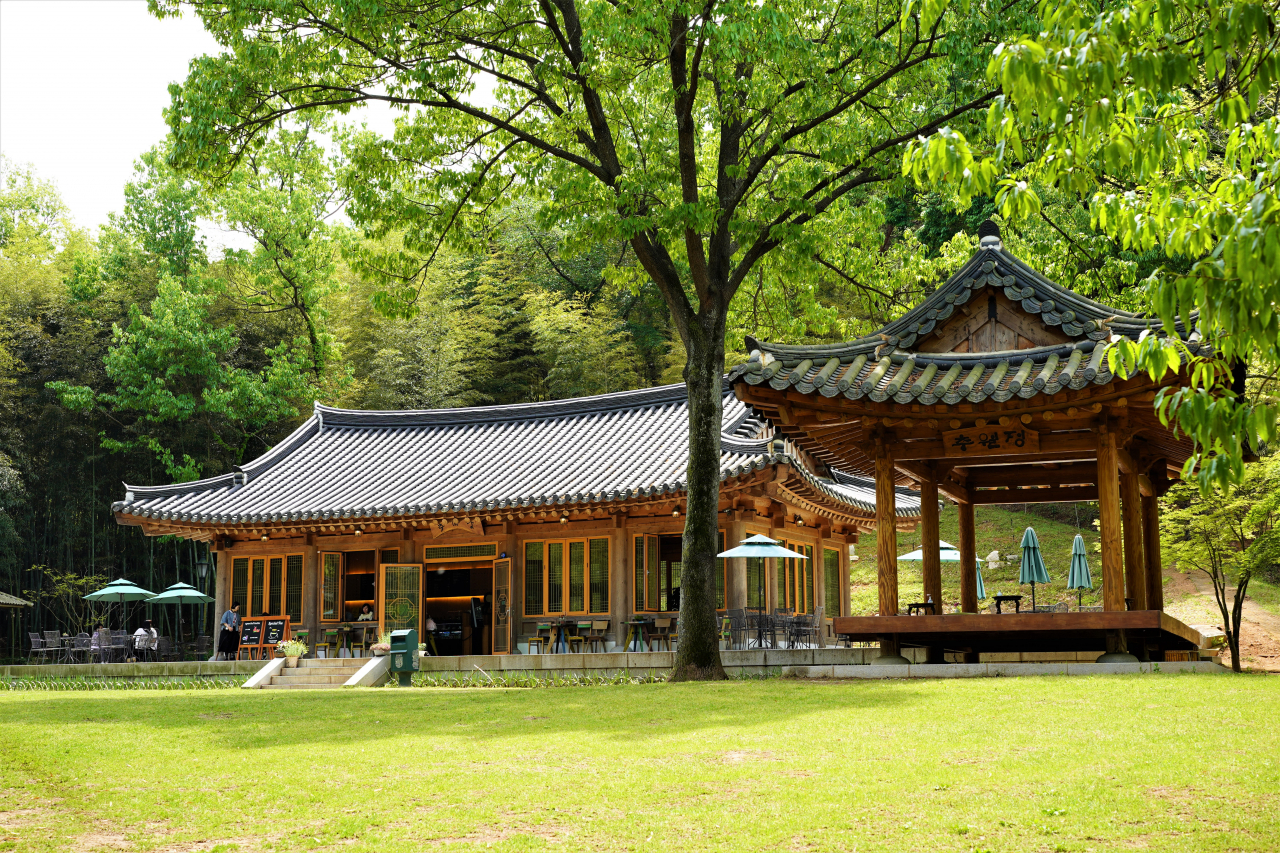 |
Hanok cafe Chuwoldang at Juknokwon in Damyang, South Jeolla Province (Lee Si-jin/The Korea Herald) |
The traditional bamboo craft technique known as “chaesang” -- a weaving technique that involves the use of carefully dyed strips of bamboo -- is still passed down from masters and semi-experts.
Visitors can tour around the Chaesangjang facility, feasting their eyes on the vivid colors and mesmerizing patterns of Damyang’s bamboo products.
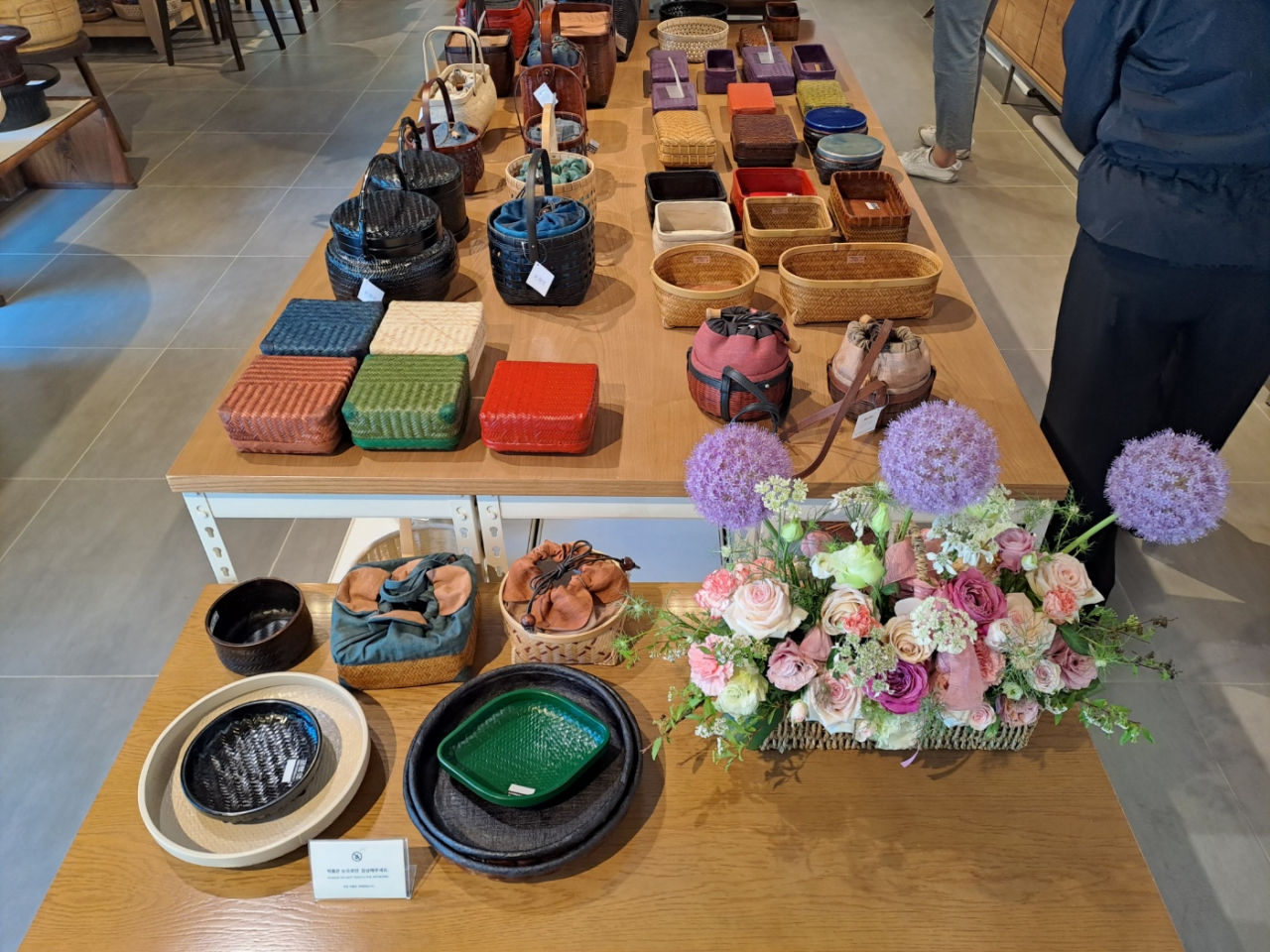 |
Bamboo handicrafts are displayed at Chaesangjang in Juknokwon. (Lee Si-jin/The Korea Herald) |
While Juknokwon is the city’s most iconic tourist destination, Damyang has still more to offer.
Gwanbangjerim Forest, which consists of a variety of broad-leaved trees, is known among many Damyang residents as an ideal place for an easy, quiet walk. The 8.5-kilometer Metasequoia Road, where more than 1,300 metasequoia trees line the street, is another beloved site for couples looking to take memorable photos with a stunning backdrop.
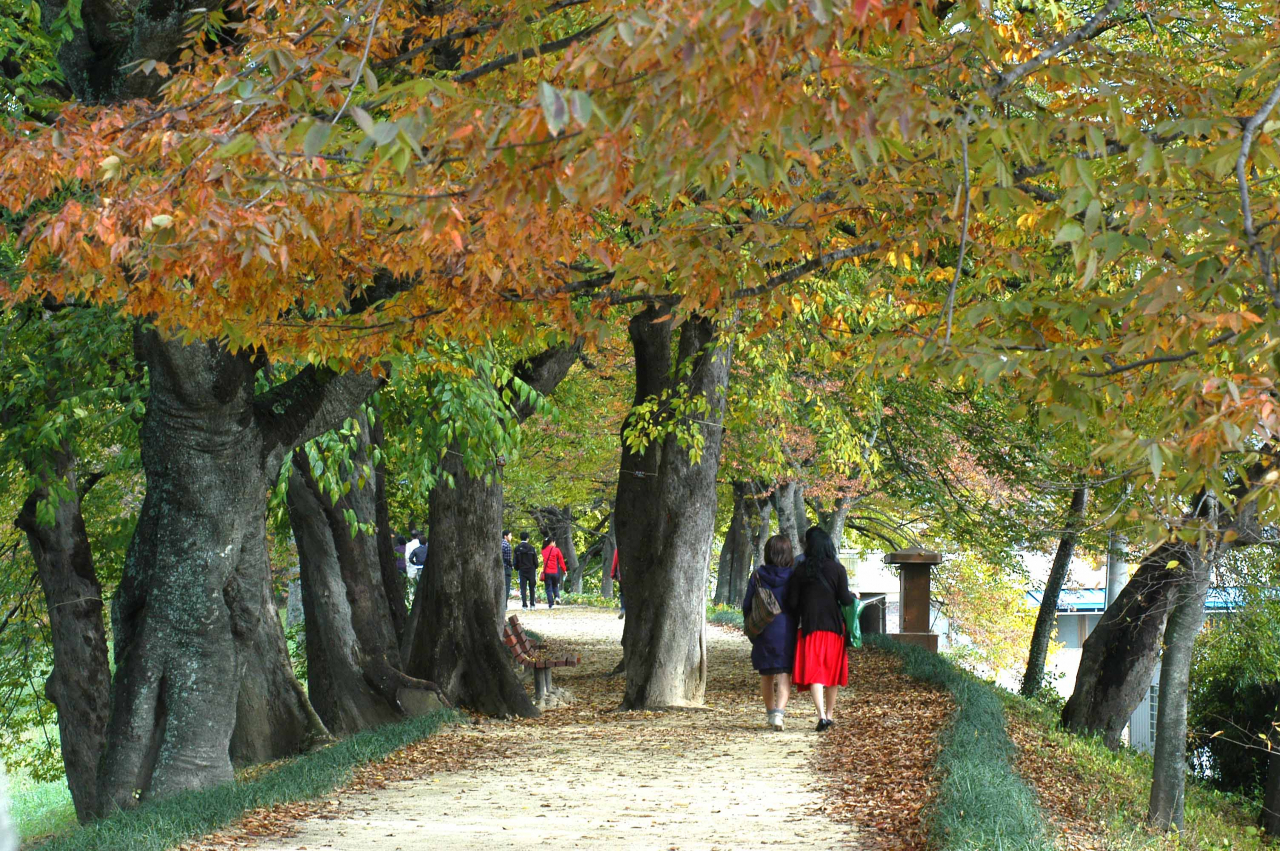 |
Gwanbangjerim Forest (Damyang County) |
 |
Metasequoia Road (Lee Si-jin/The Korea Herald) |
If you want to experience a Korean-style garden, visit Soswaewon, a hermitage garden created by Yang San-bo (1503-1557), a civil minister of the Joseon era who wished to live a secluded life in nature after being frustrated with the death of his respected teacher.
The garden captivates visitors with its low stone walls, flowing waterfalls and a pavilion surrounded by a lush forest.
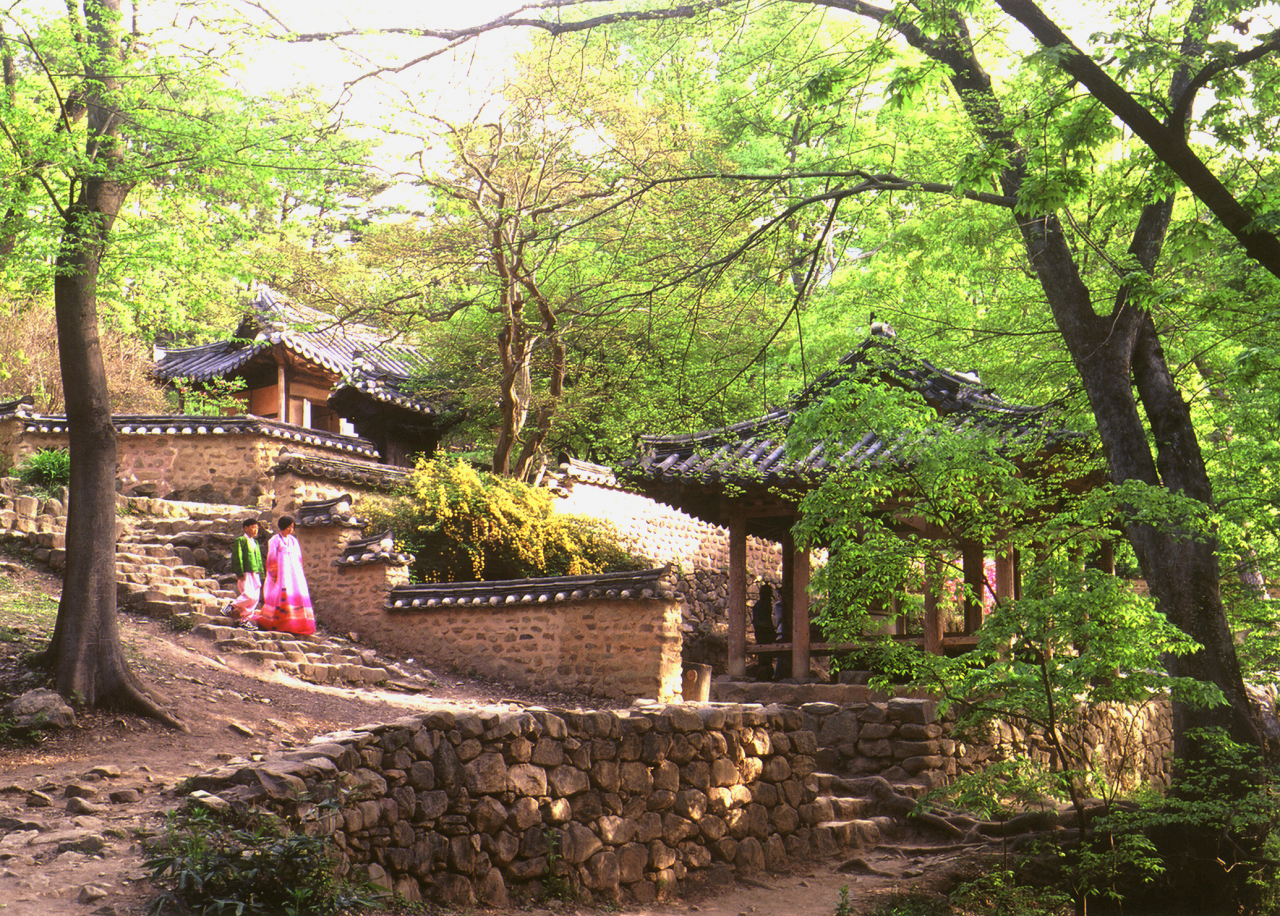 |
Soswaewon Garden (Damyang County) |
This is the 10th article in a series introducing destinations for eco-friendly travel experiences in South Korea. -- Ed.







![[Today’s K-pop] Blackpink’s Jennie, Lisa invited to Coachella as solo acts](http://res.heraldm.com/phpwas/restmb_idxmake.php?idx=644&simg=/content/image/2024/11/21/20241121050099_0.jpg)